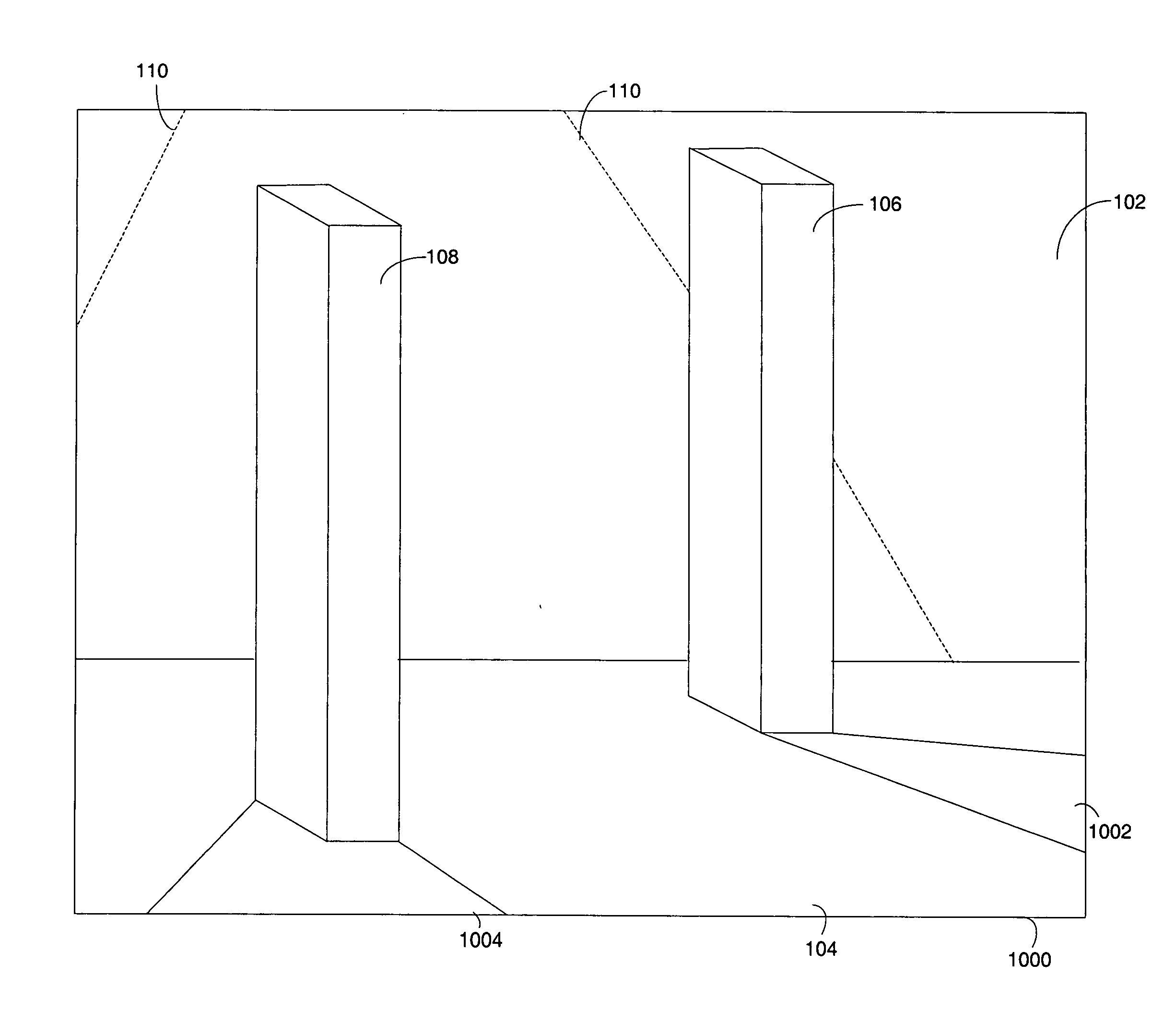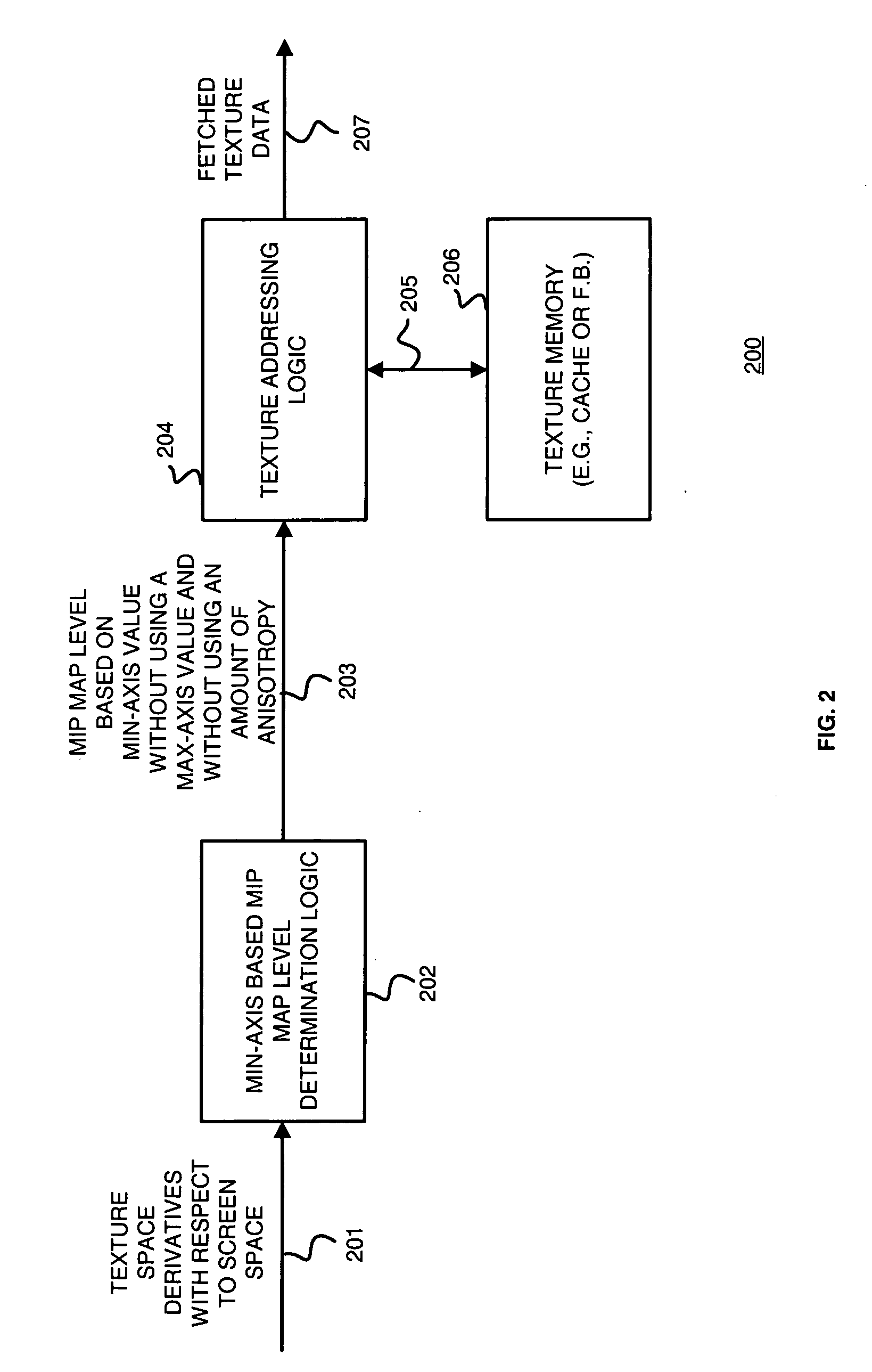Method and apparatus for selecting a mip map level based on a min-axis value for texture mapping
a texture mapping and mip map technology, applied in the field of video graphics processing, can solve the problems of two sequential and interdependent rendering problems, poor texture cache coherency, and increased graphics display requirements of the system
- Summary
- Abstract
- Description
- Claims
- Application Information
AI Technical Summary
Problems solved by technology
Method used
Image
Examples
Embodiment Construction
[0027] Generally, the present disclosure provides a method and apparatus for selecting a mip map level based on a min-axis level for use in texture mapping. In one embodiment, min-axis based mip map level determination logic receives a plurality of texture space derivatives with respect to screen space, such as du / dx, dv / dx, du / dy and dv / dy, and responsively selects a mip map level from a plurality of mip map levels, for instance in a mip map chain. The selected mip map level is based on a min-axis value without using a max-axis value and without using an amount of anisotropy. As provided in the background, no prior art mip map level selection scheme solely used a min-axis value to determine the desired mip map level. Thus, as indicated in FIG. 1, the images rendered using such schemes inadequately prevented aliased artifacts.
[0028] In one embodiment, selection of a mip map level based on a min-axis value may correspond to identifying the min-axis using the plurality of texture spa...
PUM
 Login to View More
Login to View More Abstract
Description
Claims
Application Information
 Login to View More
Login to View More - R&D
- Intellectual Property
- Life Sciences
- Materials
- Tech Scout
- Unparalleled Data Quality
- Higher Quality Content
- 60% Fewer Hallucinations
Browse by: Latest US Patents, China's latest patents, Technical Efficacy Thesaurus, Application Domain, Technology Topic, Popular Technical Reports.
© 2025 PatSnap. All rights reserved.Legal|Privacy policy|Modern Slavery Act Transparency Statement|Sitemap|About US| Contact US: help@patsnap.com



